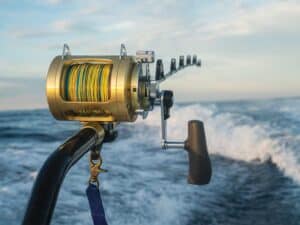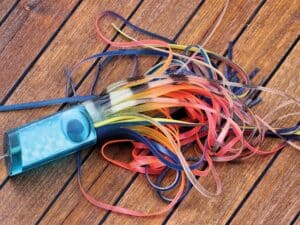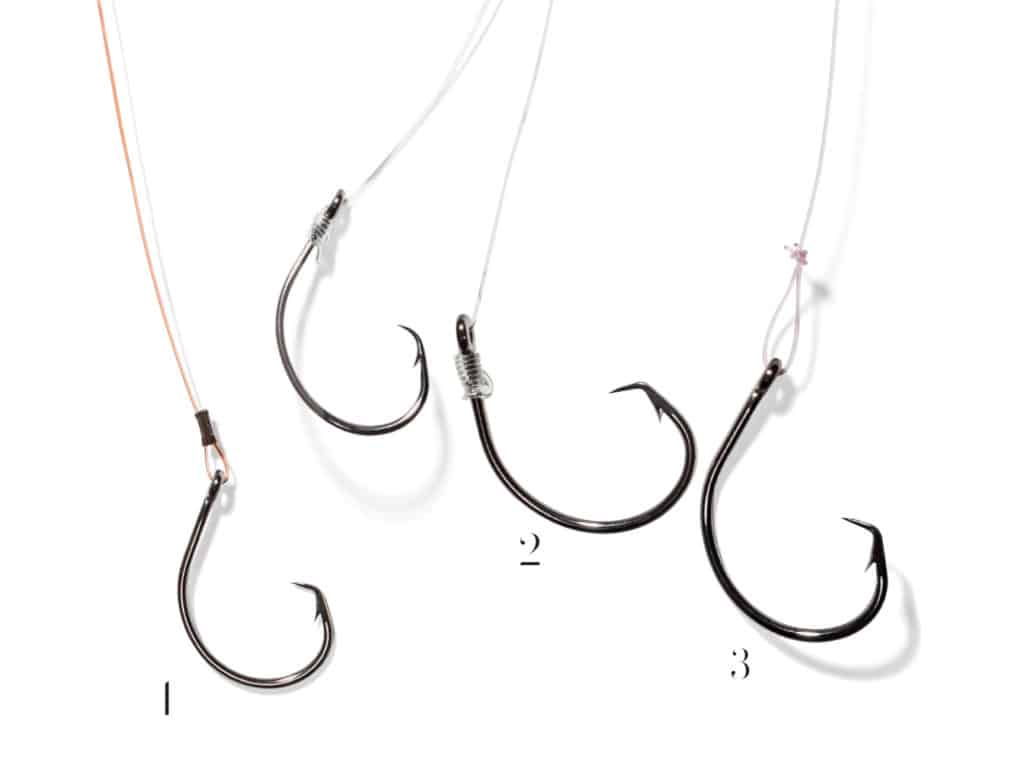
Catch ratios for billfish have soared as crews and anglers fine-tune their circle hook skills and techniques. It is now common for anglers to catch 80 to 90 percent of their bites, and how the hook is attached to the leader plays a critical role. There are three common ways to attach a leader to a circle hook, and choosing a method often depends on personal preference, with positives and negatives to each circle hook knot or connection.
Why Snell A Hook?
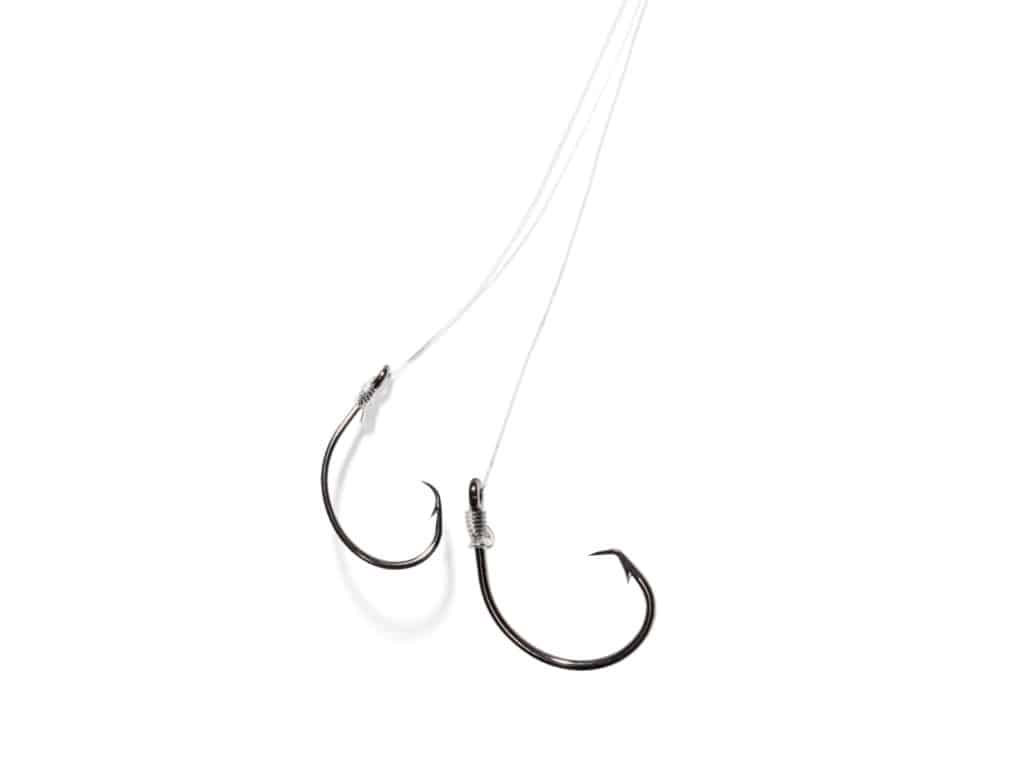
The most common connection in the Pacific for pitch baits and trolled baits, the snelled connection is also becoming more popular with kite-fishermen and live-baiters, especially when targeting sailfish with larger baits.
Snelled Circle Hook Positives
The snelled circle hook eliminates the hook from swinging on the leader and reduces the chance of the hook turning and burying itself in the bait. In the bait-and-switch fishery, statistics show a significant increase in catch ratio over a looped connection when using pitch baits because the perpendicular force against the shank of the hook causes the hook to penetrate deeper and engage at different line angles. That’s a great reason why many anglers snell their circle hooks.
Snelled Circle Hook Negatives
Snelled hooks often increase the number of lost meat fish with teeth because the leader is connected to the shank and not the eye of the hook. The teeth of a wahoo could easily cut the leader above a snelled circle hook.
Use A Crimp Connection for a Circle Hook
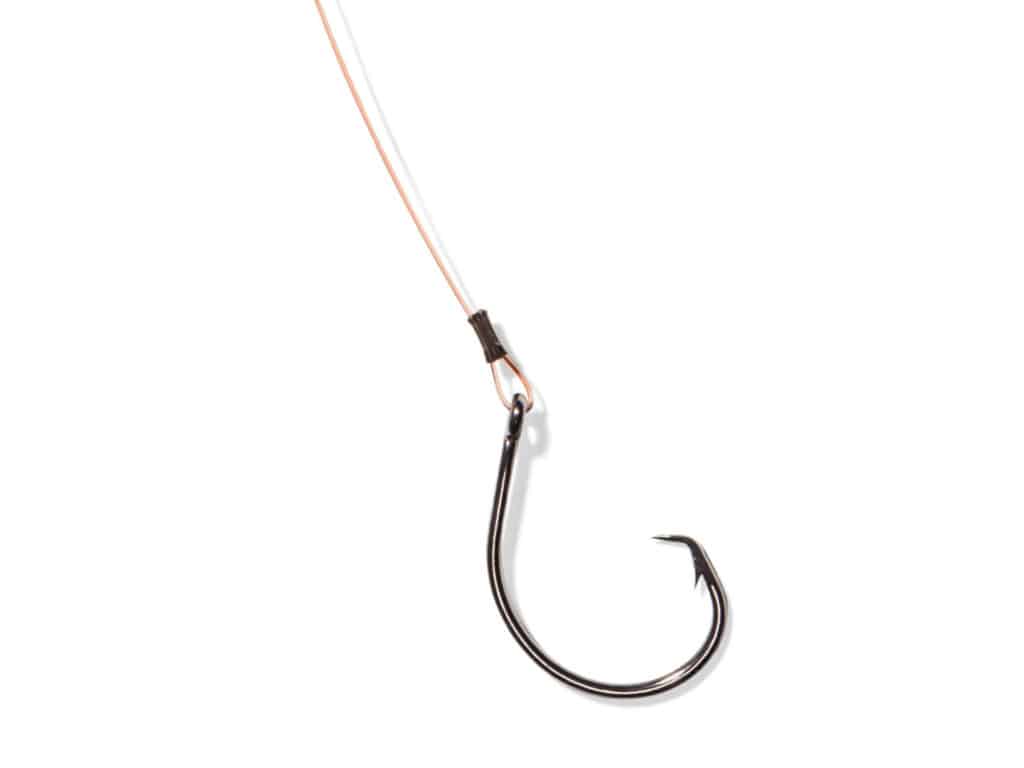
Crimping the leader tight to the eye of the circle hook is considered a happy medium between a loop knot and a snell. Some white marlin fishermen in the mid-Atlantic like this method best, and it is a good option for those not comfortable tying loop knots or snelling a hook.
Crimped Circle Hook Positives
The crimped connection keeps the circle hook from burying into the bait and still allows the hook to move on the loop when coming tight. A crimp is the easiest and most consistent way for a true connection without worrying about a pulled knot. It is also less time consuming when building multiple rigs.
Crimped Circle Hook Negatives
The circle hook can move and get stuck at an awkward angle, resulting in the hook catching itself on the leader and preventing it from ever finding its mark. Matching the correct crimp to the diameter of leader is pertinent; not using the right crimp and crimping tool or over-crimping the connection could sacrifice leader strength. If the connection is too tight to the hook, the pressure of the jaw closing can flatten or pinch the monofilament and break the leader.
Tie a Loop Knot to a Circle Hook
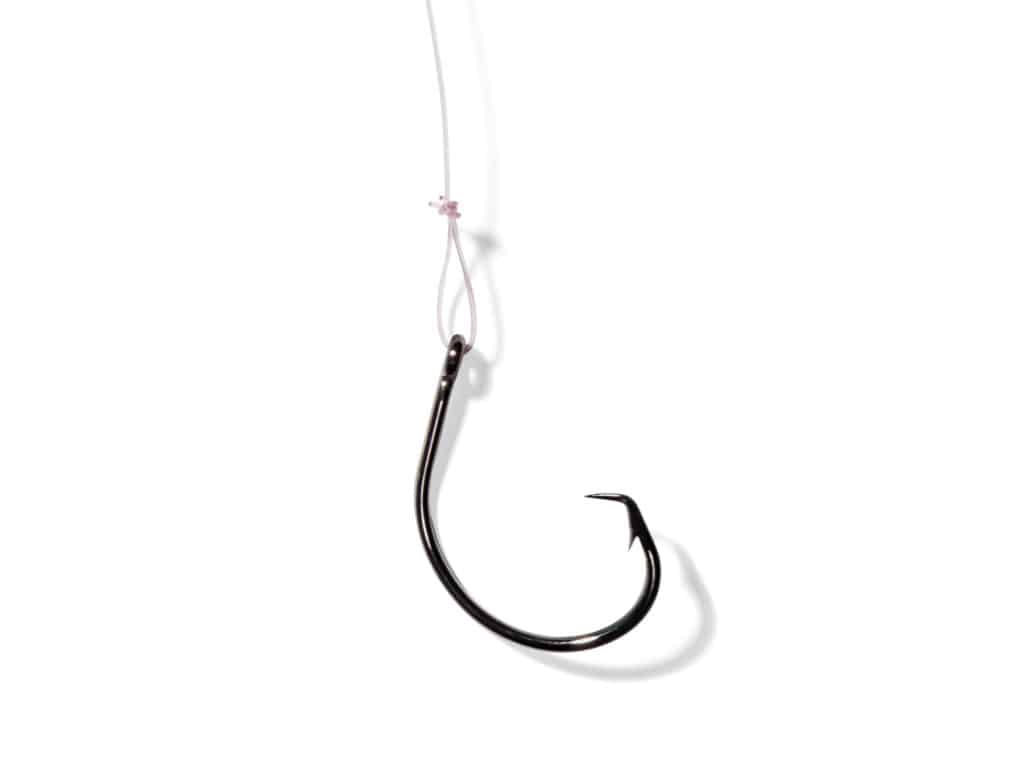
One of the best knots for circle hooks is the loop knot. The type of loop knot varies, but the perfection loop, surgeons loop and uni knot are all common choices. A loop knot allows the hook to move freely on the leader, and this connection is most commonly used for live-bait fishing. When picking circle hook knots, definitely give the loop knot a shot.
The Positives of Tying a Loop Knot to a Circle Hook
When kite-fishing, the loop allows fragile baits, such as pilchards and herring, to change direction and swim in a more natural manner, extending the life of the bait and encouraging the bait to swim in tighter circles under the kite. The loop also allows the hook to easily find the corner of a predator’s jaw when an angler engages the drag. A loop-knot connection can also reduce the number of lost fish with teeth, such as wahoo and kingfish, because the leader is connected to the eye of the hook rather than the shank.
The Negatives of Tying a Loop Knot to a Circle Hook
If the loop is too large, the hook can swing back against the bait and bury itself, causing the hook to become ineffective and lead to pulled hooks. The connection might also cause the hook to penetrate the predator from the outside in, rather than inside out.
